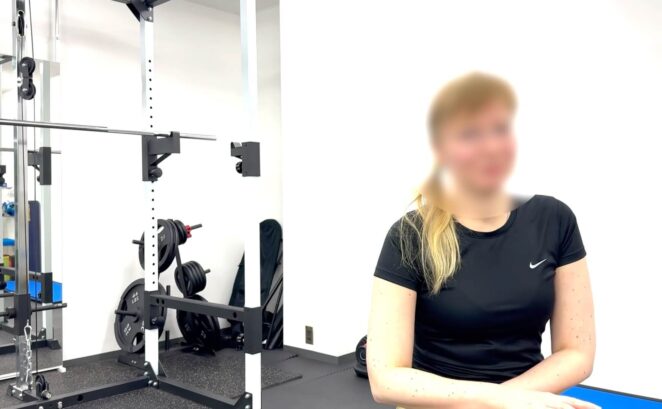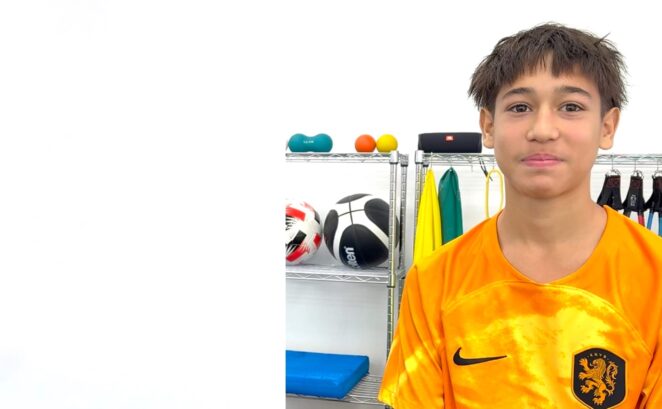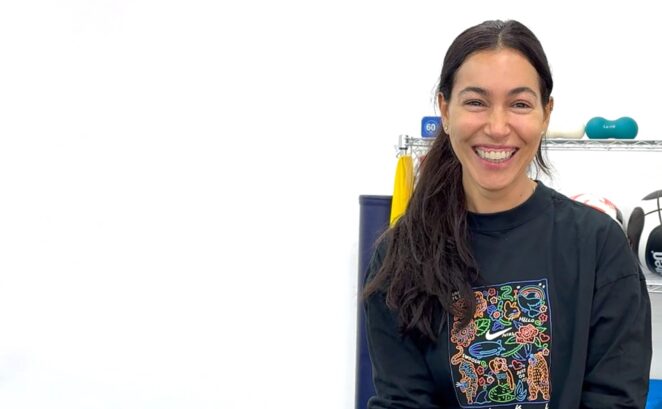2024.06.18
English
『Able to run without pain first time since surgery』Feedback of rehabilitation for meniscus tear
執筆中尾 優作(理学療法士/プロスポーツトレーナー)
ヨーロッパの大学、大学院で理学療法を学ぶ。欧州サッカー、日本のB.LEAGUEでトレーナーとして活動したのち、地元神戸三宮にメディカルフィットネスジム【Lifelong】を設立。トップアスリートを始め、"病院で治らない痛み"に悩む人にワンランク上のリハビリを提供する。
Ms. L consulted Lifelong about the aftereffects of the meniscus suture surgery she underwent two years ago.
She experienced a condition called locking, where the knee suddenly becomes unable to bend, and was diagnosed with a meniscus tear.
She underwent surgery while still living in Korea, but began experiencing severe pain after the procedure.
However, appropriate rehabilitation was not prescribed post-surgery, and her treatment at the hospital ended without her being able to move her knee as she had hoped.
Originally, she enjoyed physical activity, but due to knee pain, and the pain worsening with movement, she was unable to engage in her hobbies of running and yoga for the past two years.
She had received treatment from many physical therapists over the years, but no significant improvement was observed.
At Lifelong, we first checked the condition of her knee and evaluated the cause of the pain.
The meniscus itself did not seem to have any major issues, but she had a characteristic movement where her knee would bend significantly inward when flexing and extending.
Additionally, because moving her knee often caused pain, she avoided moving it, leading to decreased muscle strength around the knee and reduced joint stability.
In our exercise therapy, we first practiced bending and extending the knee in the correct direction and angle, while also strengthening the muscles around the knee without causing pain.
Simultaneously, we re-trained basic movements such as walking and squatting to avoid placing undue stress on the knee.
By gradually increasing the exercise intensity while being careful not to cause pain, the pain gradually improved, and within a few months, she was able to run without pain.
Ms. L shared her thoughts on the exercise therapy, expressing how she could run without pain for the first time in two years since her surgery.
Ms. L
- Lateral meniscus tear, underwent suture surgery
- Knee pain has persisted since the surgery two years ago
- Feels pain every day in daily life and even on stairs
- Wants to enjoy hobbies like exercise and yoga again
目次
Purpose of use
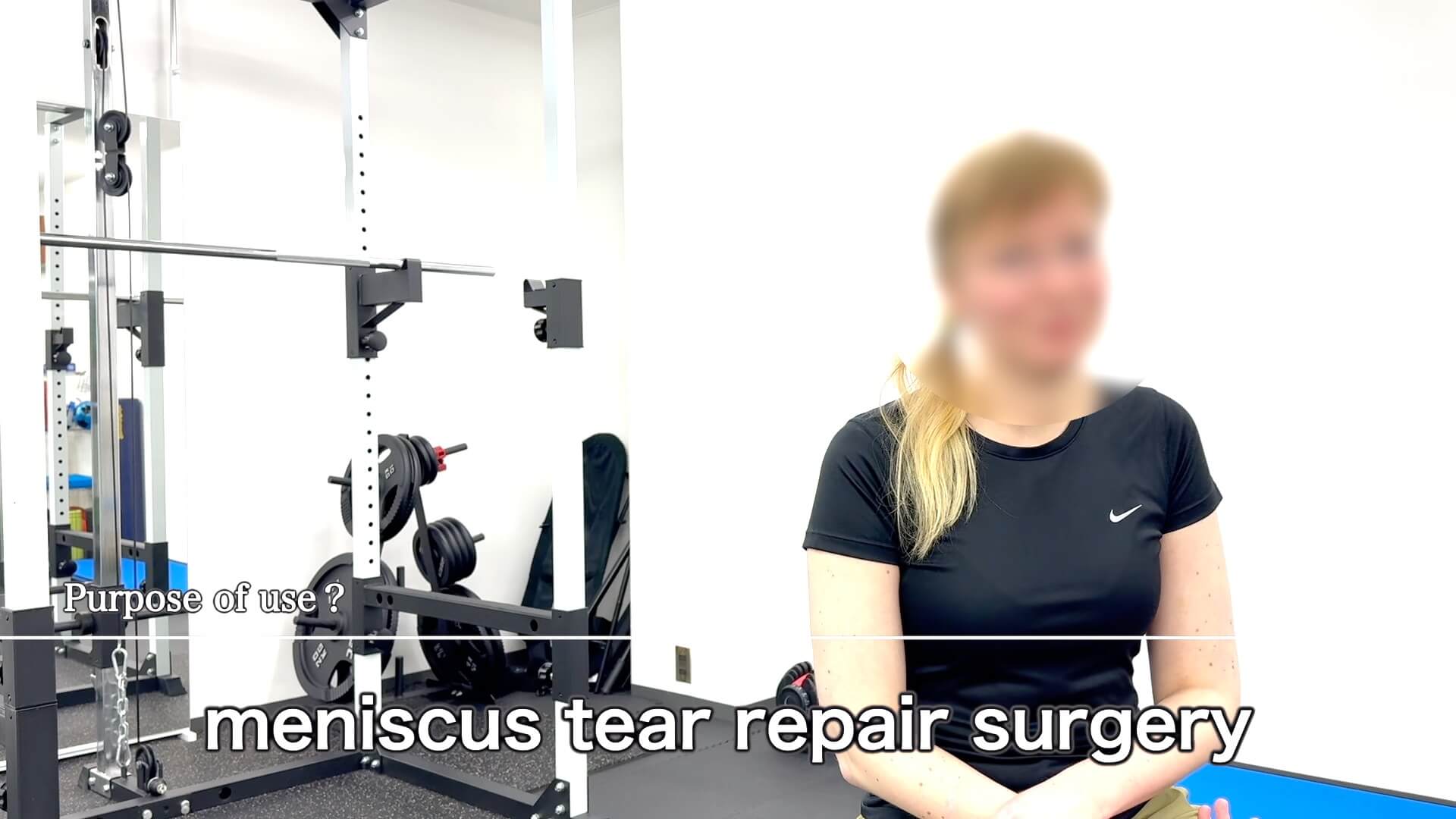
a couple of years ago.
But I never really had proper rehabilitation. And I always had pain and couldn’t really walk for a long time, couldn’t do much exercise. Basically couldn’t really do any exercise.
So that’s why I came here.


After the surgery, she did not receive adequate rehabilitation, and her range of motion and muscle strength did not return to normal.
Because of the knee pain, she couldn’t do her beloved activities such as exercise, yoga, and running, and frequently felt pain even in daily life.
Why Chose Lifelong
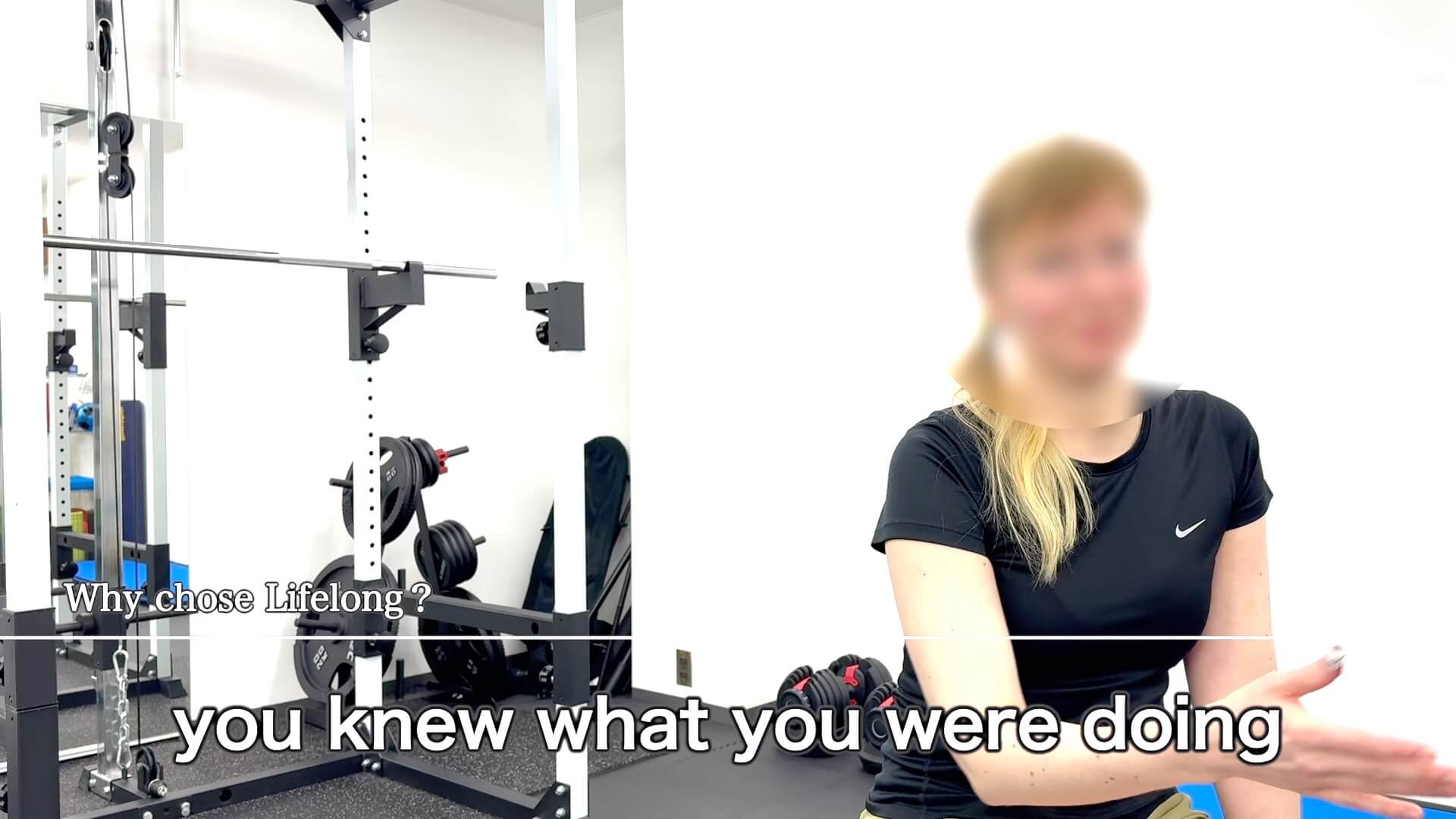
One of the most important things as a foreigner in Japan.
And also you had really good reviews on Google.
Your website looked just very nice and professional
and looked like you knew what you were doing.


My approach is to carefully explain the rehabilitation process, including what kind of rehabilitation is being done, the objectives, and how improvements will be made.
It is important to establish a mutual understanding of the rehabilitation process so that we can work together as a team.
Impression of exercise therapy

And I felt physical therapy before where I didn’t feel any effect.
But here I feel like you really take your time to assess and really try to understand the problem, which most people don’t really have the time for or take the time for.
And you make a plan that you constantly change and adapt and I felt like that was a really good way of progressing snd I felt better and better over time.


For example, in Ms. L’s case, we consider why her knee hurts and what can be done to eliminate the pain. Based on this, we determine what exercises would be beneficial.
Rather than a five-minute examination at the hospital, we spend about an hour checking the body’s condition and movement characteristics to develop a precise rehabilitation plan.
By tailoring the rehabilitation to each individual’s body, the effects become more apparent.
How daily life changed

I can go for runs and I can just do more exercise
that I couldn’t do before without pain.
And also just when I walk around when I go for long walks if I go on a holiday walk a lot, I don’t feel any pain afterwards.
My daily life is not completely pain free yet, but almost pain free. So really big improvement.


The main goals of her rehabilitation were to bend the knee straight, strengthen the muscles around the knee, and improve stability on one leg.
As we progressed with these goals, she gradually felt less pain. As her muscle strength improved, her knee became more stable, and learning to move it at the correct angle led to a significant reduction in pain in her daily life. This was truly a great outcome.
Effect of exercise
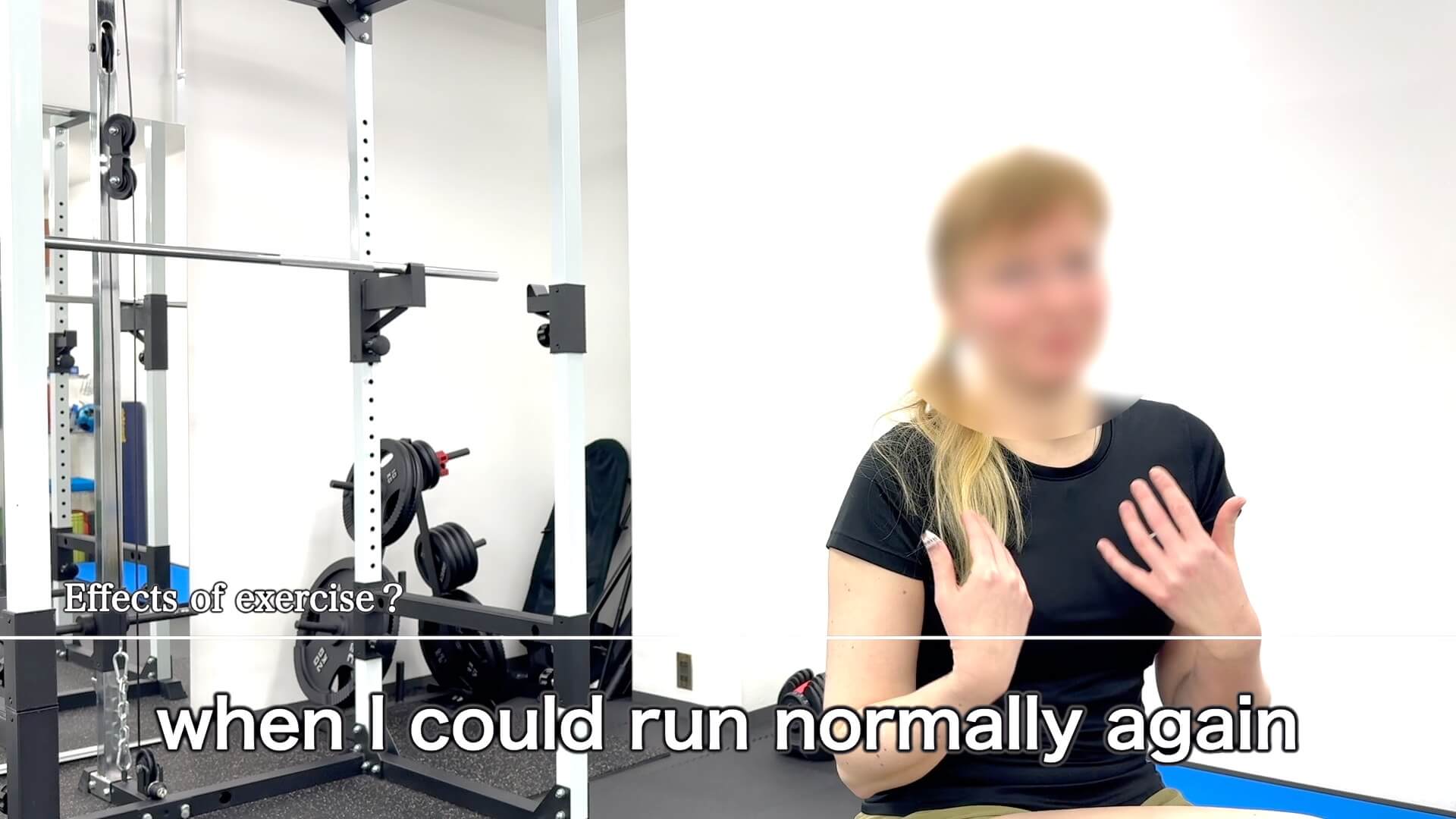
to go back to running because I really enjoyed running before my surgery.
And after my surgery, I tried to go running and I had so much pain. I couldn’t even run for ten minutes I think
even just a few minutes or just running for the bus was painful.
So I was really really happy when I could run normally again.
And I remember the first time I started, I didn’t want to stop. But I had to stop myself so that I don’t overdo it.
But I felt really free again and it was really nice.


She had told us that a year ago, she experienced pain after 10 minutes of running, which lasted for a week. Now, she can run without pain.
More than anything, we hope she can continue to enjoy running comfortably without any pain.
How we treated meniscus tear
Since Ms. L did not receive adequate rehabilitation after her surgery, there was a significant difference in the range of motion and muscle strength between her knees.
Constant pain since the surgery led her to unconsciously favor her right knee and overuse her left leg, resulting in a vicious cycle where her right knee became stiffer and weaker.
Cases like this, where postoperative complications arise, are common. It is crucial to thoroughly analyze the current state and evaluate what has not healed properly.
In Ms. L’s case, her knee had a characteristic inward bending movement (knee-in), which likely contributed to the initial meniscus injury.
Additionally, her basic muscle strength around the knee had decreased.
We first had her practice recognizing the correct joint angles to avoid putting stress on the meniscus.
Alongside this, we worked on strengthening the muscles around her knee, which she had been too apprehensive to do before.
Specific explanation
After undergoing external meniscus suture surgery, Ms. L did not receive intensive rehabilitation, resulting in limited joint range of motion and incomplete muscle recovery.
When doing squats, her knee would protrude forward and bend inward.
Initially, we conducted movement learning exercises without compensatory movements, using a mirror to ensure knee flexion and extension could be performed properly.
There was a significant imbalance in muscle strength between the left and right VMO, adductor group, hamstrings, and gluteal muscles.
Ms. L also found it challenging to consciously contract each muscle.
Sensitive to knee pain, she experienced fluctuations in pain intensity daily.
Therefore, we adjusted her exercise regimen flexibly while gradually increasing the load.
By improving joint stability and muscle strength around the knee without compensatory movements, she was eventually able to perform high-intensity exercises without pain.
At Lifelong, he underwent exercise therapy focusing on the following points:
- Learning to move the knee straight
- Strengthening the muscles around the knee
- Gradually increasing the exercise intensity within the pain-free range
At first, Ms. L couldn’t bend her knees correctly even when doing squats with both legs, but gradually, she got used to it and no longer felt any pain.
Then, we progressed to bending her knee straight on one leg, and even during jumps, she bent her knees straight, and we progressed the rehabilitation with careful attention to her knees.
Next goal
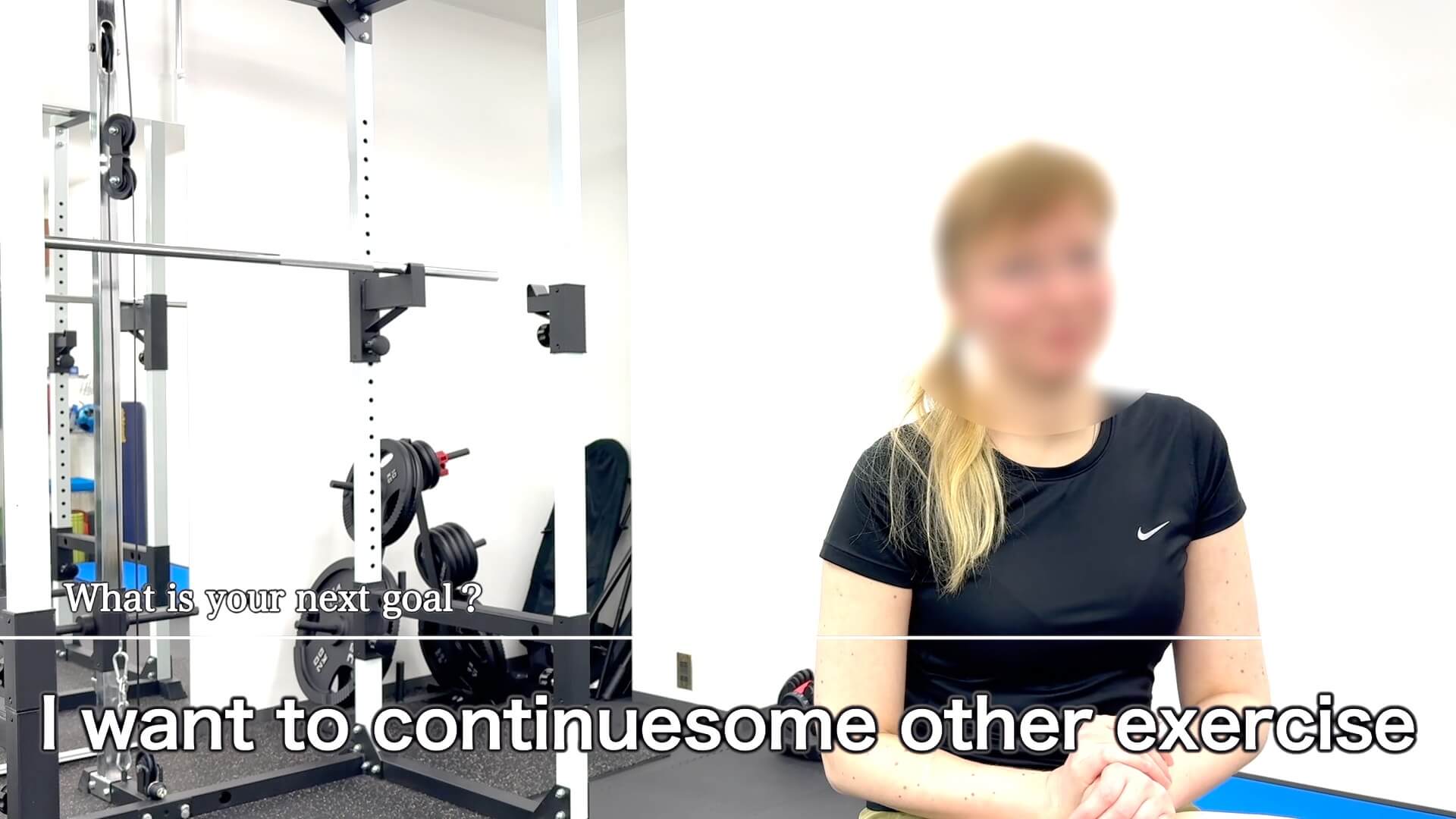
to run faster and longer.
And I would want to try some other exercise
like ice skating and maybe badminton. So I also enjoy that.
I want to see how that goes.


They can face challenges that they previously had to endure due to pain, and I would be happy if they could spend their days cheerfully and energetically.
If you would like to receive treatment and rehabilitation in English from experienced physiotherapists, please do not hesitate to consult with us
ピックアップ記事
-

『Able to run without pain first time since surgery』Feedback of rehabilitation for meniscus tear
2024.06.18
-

『Returned to play football after 1 month of knee pain』Feedback of rehabilitation for Osgood-Schlatter disease
2024.04.23
-

『I couldn’t even carry a pot before coming here』Feedback of Rehabilitation for shoulder labrum tear
2024.04.11


